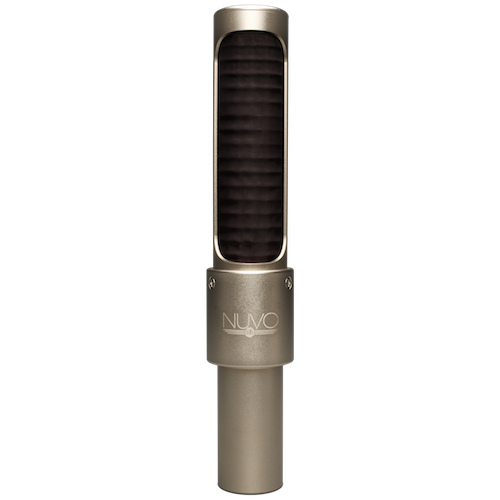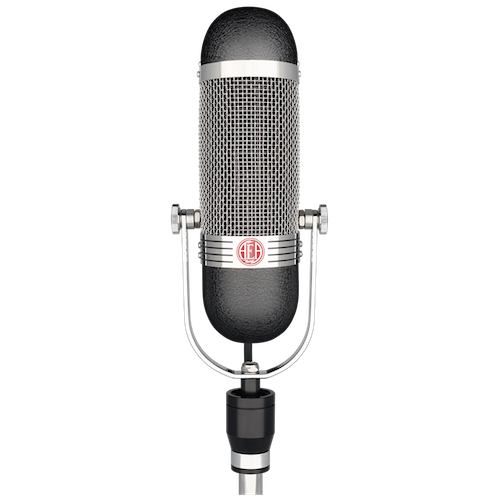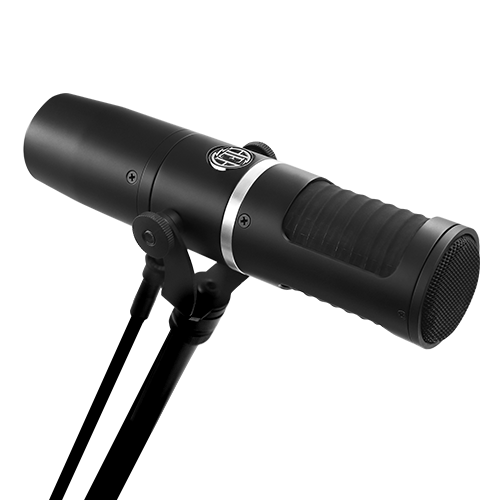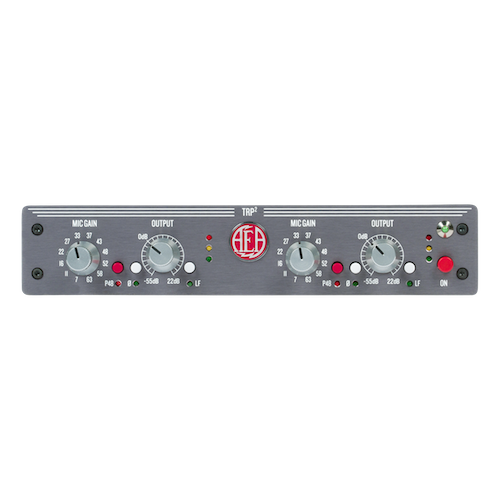In the world of microphones, a lot of language is loosely used to describe the sound of a given model. Since there is no real definition, these words are used to approximate the feelings that are felt when comparing microphones. Two of the most frequently used descriptions are “dark” and “bright” microphones. But what exactly do these terms mean?
The word “dark” is often applied to ribbon microphones. Perhaps this terminology came into being when condenser mics became popular back in the late 1950s, because they were considered “bright.” But, again, what does this actually mean?
Bright or Dark?
Condenser mics pushed ribbon mics aside and became the standard in the 1950s because they accentuated the top-end in a recording due to their high-tuned capsules.
When recording to tape, this was beneficial because tape’s high-frequency roll-off helped tame the condenser’s exaggerated frequencies. This made condensers sound smooth. The natural low-end bump of the tape machine would add bass, coincidentally giving a condenser a similar frequency response to many ribbon mics. For many years, tape and condenser mics were the perfect team and it lasted until the 1990s.
It was also during this era of tape that ribbon mics became less popular. The ribbon mic’s treble roll-off proved to be an issue due to the tape machine’s high-end roll-off and low-end bump. The perceived darkness of a ribbon mic was considered too much for tape recording. Together, ribbons and tape proved to be too dark a combo for many recording situations.
Digital Recording Arrives
When digital recording arrived in the late 1990s, ribbon microphones became the perfect match for digital’s neutral sound. The audio recorded into a digital converter with a mic and preamp was naturally captured and unchanged. It is the reason ribbons are popular again.
Though ribbons have a high-frequency roll-off, it is a smooth and natural roll-off that is akin to the roll-off that human beings hear with their ears. This is unlike condenser microphones, which boost those high frequencies. The natural and honest sound of the ribbon is more in-line with what you hear when listening to a musical instrument.
So the old terms, “dark” and “bright” have been informally redefined again. Are ribbons actually now dark or are condensers just hyped to accentuate the highs? Actually, there’s a little bit of truth to both sides. Ribbons are dark in that they have a high-frequency roll-off, just as human ears have a high-frequency roll off.
Depending on the ribbon mic being considered, the high-frequency roll-off is more or less drastic. Some ribbons are, in fact, very dark — especially when far-field ribbon mics are used up close due to the proximity effect. In this case, they totally obscure the midrange. But many ribbons, like AEA’s KU4, KU5A, and N22, are bright and natural-sounding microphones from up close.
On the other hand, almost every condenser microphone accentuates the top end due to the nature of its design. It doesn’t mean that every condenser is harsh, but it does mean that they are hyped.
Knowing how ribbon and condenser microphones are different is important to understanding the modern age of digital recording. The two types of microphones can complement each other and be successfully used together. It is important to learn which type of mic, ribbon or condenser, sounds best on each sound source.
Ribbon vs Condenser Example
Saxophone
In this audio example, saxophonist David Mann performs his original composition, “NUVO Noir” and compares the AEA N8 with a U87 cardioid condenser. In the ribbon example, notice how the high-frequencies slightly roll off, but it is more in line with what your ears hear when listening to a sax player. The condenser accentuates the top-end. The midrange of the N8 has depth and clarity while not being overly harsh.
Drums
Harsh cymbals give a clear distinction between the difference in ribbons and condensers. There are many instances where engineers will try to tame the harsh top end of cymbals by reaching for darker cymbals, but what they actually want is a mic that doesn’t accentuate the top-end.
In this drum overhead example, a pair of spaced AEA N8s is compared to a pair of spaced KM84 condensers in cardioid. Notice how the top-end of the ribbons are smooth and the full thud of the kick and toms are captured. The KM84s accentuate the top frequencies while rolling off the low-end of the toms and kick drum.
Strings
Violins and Violas give a clear distinction between the difference in ribbons and condensers. There are many instances where engineers will try to tame the harsh top end of a bow by EQing a condenser, but what they actually want is a mic that doesn’t accentuate the top-end.
In this violin overhead example, a single AEA R84 is compared to a 414 condenser in cardioid. Notice how the top-end of the ribbons are smooth and the roll off those pesky harsh frequencies. The 414s accentuate the top frequencies.
Rethink How to Describe the Sound of Microphones
Compared to the hyped sound of condenser mics, ribbon mics sound dark to most people. Yes, typical ribbon models have less top-end than condenser mics, smoother high-end than most moving-coil mics and a pronounced proximity effect– that’s the way we hear.
When you consider the history of recording and the origin of the words used, it becomes easier to understand where these terms originated. The challenge today is to distinguish between the benefits of both ribbon and condenser microphones and see where each fits in the modern recording chain.
Each microphone is a distinctive tool — a bit like a sonic paintbrush. It allows the skilled recordist to create a unique sound. In using terms like “dark” and “bright,” understand the differences and learn where each can work to your benefit in a recording.










